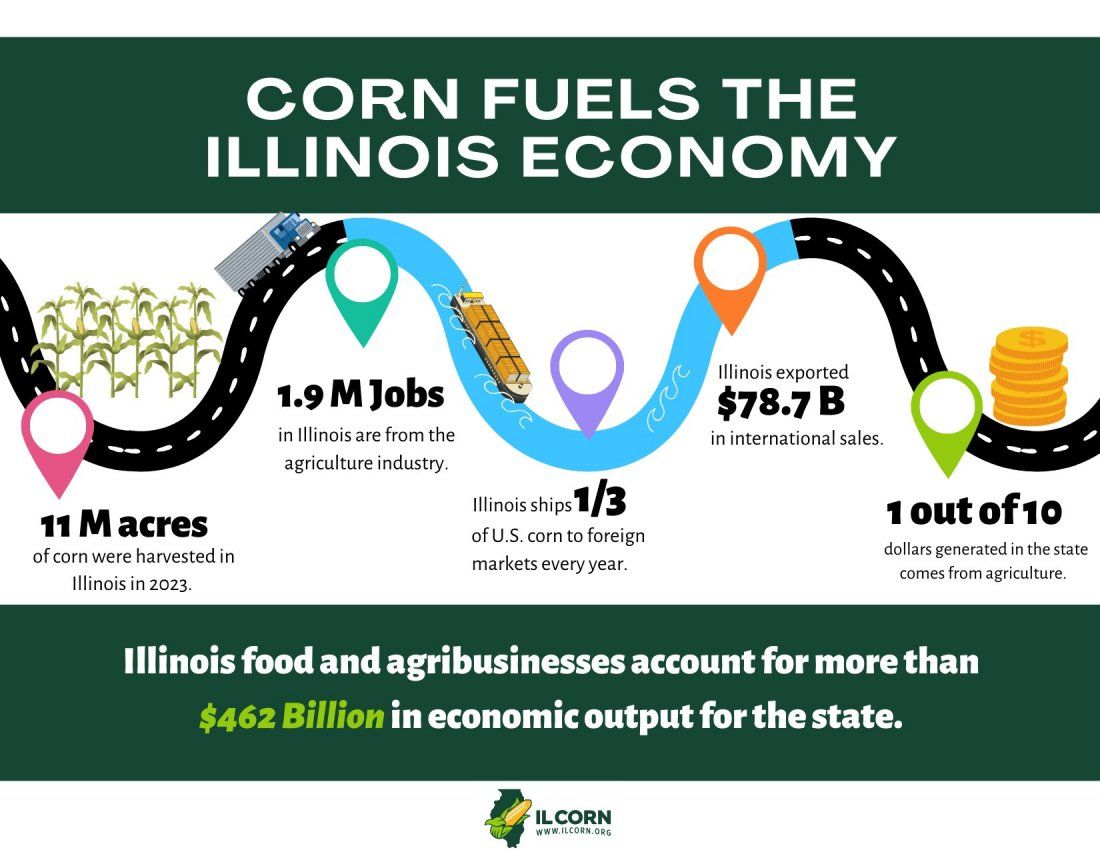Agriculture Fuels Illinois’s Economy
July 11, 2024

Agriculture is a main driver in Illinois’s economy. The state’s prime farmland, its proximity to top tier manufacturing, and its expansive river and rail infrastructure creates a vibrant space for financial capacities.
Ranking second in corn production, Illinois’s golden commodity has much to offer its state.
- Illinois is ranked fifth nationally in overall agricultural production.
- In Illinois, over 11M acres of corn were harvested in Illinois in 2023.
- 1.9 M jobs in Illinois are from the agricultural industry.
- Illinois ships 1/3, or approximately 18 million metric tons, of U.S. corn to foreign markets every year. This is approximately 116% of Japan’s total imports of corn in the 23/24 marketing year.
- Illinois exported $78.7 billion in international sales.
- 1 out of 10 dollars generated in the state comes from agriculture.
- Illinois food and agribusiness account for more than $462 Billion in economic output for the state.
- Overall, corn growers were responsible for a $151 billion boost to the U.S. economy in 2023, reports National Corn Growers Association (NCGA) Lead Economist Krista Swanson.
- NCGA reports Illinois corn farming contributed over $20.9M to United States economy.






